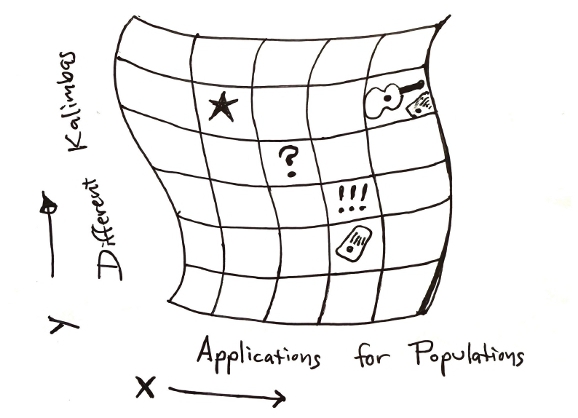
Use of this website constitutes acceptance of the Privacy Policy and User Agreement. Copyright © 2020 Kalimba Magic. All Rights Reserved.
The notes your kalimba plays are probably just like the white notes on the piano. However, the way you play them ends up being totally different from a piano… because the notes are organized differently than on a piano.
Playing a scale on a piano, especially just on the white notes, is quite easy.
Playing a scale on the kalimba is a bit harder, but the scale is one of the most useful bits of music you can learn – so please do learn these scales!
(By the way, the tablature here is for a 17-Note Kalimba in C, but the concept and even the tablature is the same for many other types of kalimbas.)
What makes the scale a bit tricky on the kalimba is the way you need to zigzag back and forth to play the scale. At the center of the kalimba, or on the low notes, it is easy to zigzag back and forth.
The way I paint my kalimbas, the first note of the C major scale, C, is unpainted. The next note is D, immediately to the left of C, is painted. The next note after that is E, on the right side of the central C, which is also painted.
This illustrates the way the painted tines work together: the painted tines come in pairs, and the painted tine on the left is always one note lower than the matching painted tine on the right.
If you are sloppy on your scales, they won’t sound like scales. They might sound confusing.
If you are accurate on your scales, you will make it sound like you know what you are doing.
And an added bonus: most songs use little bits of scales liberally, so learning how to play the scales accurately and without really thinking will give you a jump start on learning the melodies of songs.


Sign up for our newsletter and free resources with your email address:
We pinky promise not to spam you and to only send good stuff.
Use of this website constitutes acceptance of the Privacy Policy and User Agreement. Copyright © 2020 Kalimba Magic. All Rights Reserved.
Notifications